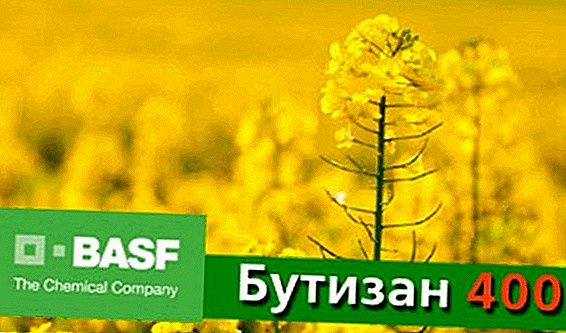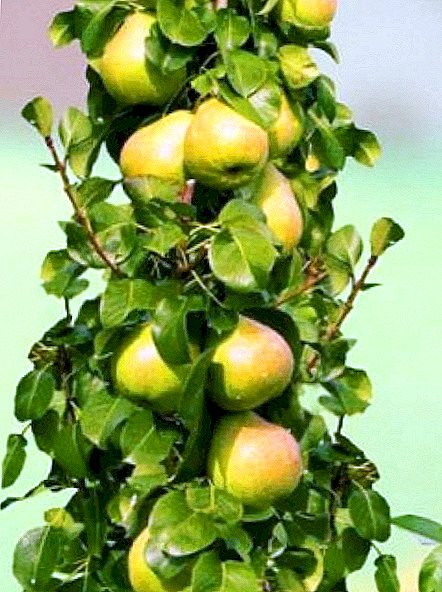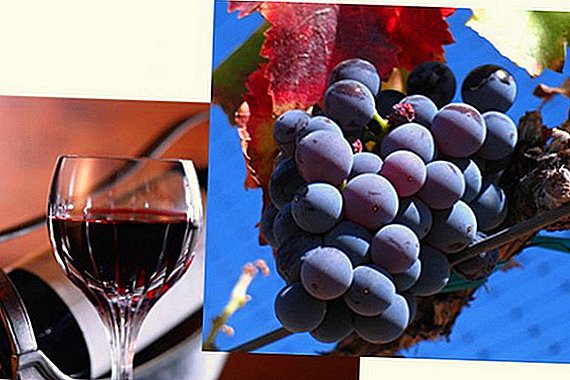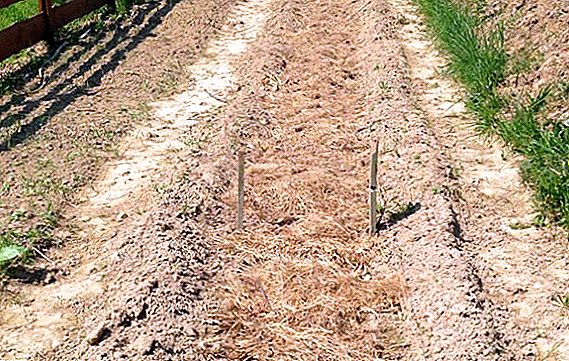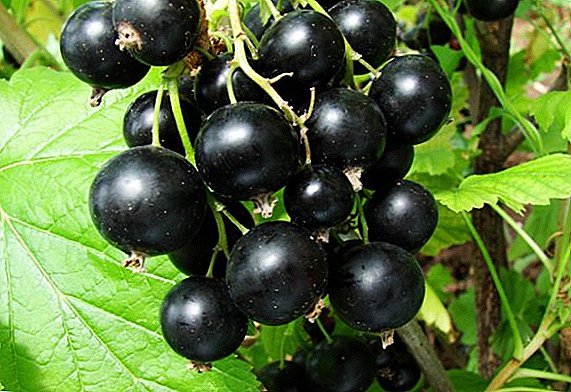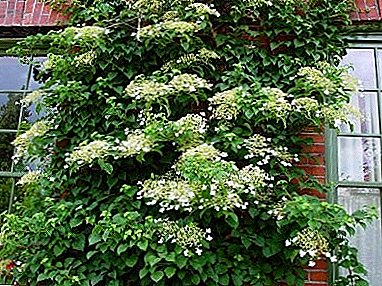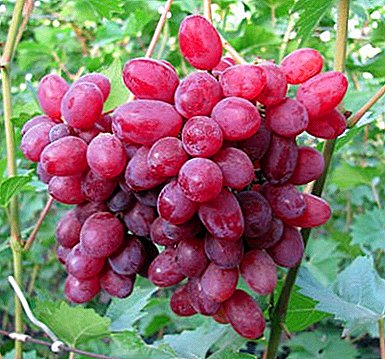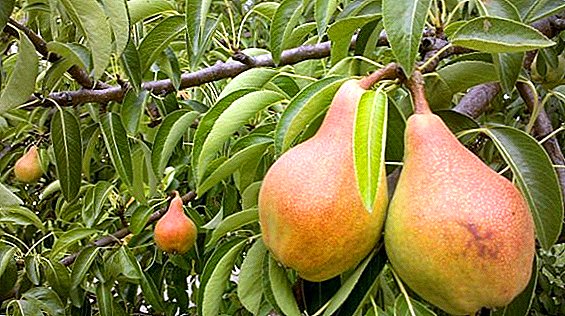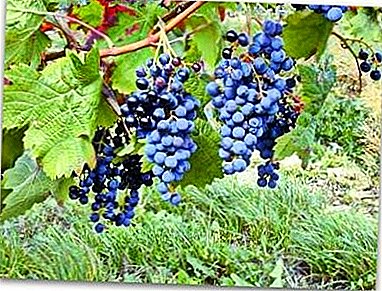
Grapes grown in Russian latitudes with short summers and cold winters should be frost-resistant, endurance and early ripening.
All these qualities have a wonderful variety "Mystery of Sharov". Many growers dream to get them. After all, the variety, among other things, is unpretentious and gives stable yields.
What kind is it?
Wine grape "Mystery of Sharov" began to be cultivated relatively recently - only about 40 years ago. Winegrowers immediately appreciated the new variety, featuring excellent taste and rare winter hardiness.
It is especially popular in the northern regions. "The mystery of Sharov" can be called a universal variety. Fine home-made wine and delicious juices are made from its sweet and pleasant-tasting berries.
The universal varieties include Supaga, Alexander and Krasa Balki.
Grapes Mystery of Sharov: description of the variety
Shrubs varieties have good growth power. Early ripening shoots are long, thin and flexible. Over the summer, the vine grows to 3 meters. Medium-sized leaves have a heart-shaped and five-lobed dissected form.
The Delight White, Viva Hayk and Regent are also notable for their good growth power.
Clusters are medium or small, varying in weight from 100 to 500 g and have a loose and highly branched form. Grape flowers are bisexual, not needing pollinator varieties.
 Rounded and not very large blue-black berries weighing up to 3 g are densely covered with pruine. They have a pleasant taste with juicy, as if melting in the mouth, pulp. The taste of fruit as it ripens changes, acquiring first strawberry and then crimson hues.
Rounded and not very large blue-black berries weighing up to 3 g are densely covered with pruine. They have a pleasant taste with juicy, as if melting in the mouth, pulp. The taste of fruit as it ripens changes, acquiring first strawberry and then crimson hues.
Very tasty varieties are Romeo, Velika and Chocolate.
The accumulation of sugars in the berries is about 22%. The skin of the berries is thin, but rather dense. In the fruit there is 2 or 3 small bones.
The variety is remarkable in that it has good keeping quality and can be maintained for up to three months after harvest, without losing its appearance and taste. The ripened grapes keep on bushes for a long time. In this case, the berries, slightly drying over, become even sweeter.
You can also propagate by cuttings Aladdin, Bogatyanovskiy and Tukay.
A photo
Photo grapes "Mystery of Sharov":





Breeding history and breeding region
"The Mystery of Sharov" was bred in 1972 by an amateur breeder from the Siberian city of Biysk, R. F. Sharov, who is the developer of a whole system of viticulture for the northern regions. The purpose of Rostislav Sharov's hard work was to create grapes that could withstand the cold Siberian winters.
To obtain the variety “Mystery of Sharov”, the gardener-enthusiast used the frost-resistant hybrid of Amur, American and European varieties “Far Eastern 60”, which is the leader in frost resistance - it can withstand temperatures down to -40 ° C.
 Sharov pollinated "Far Eastern 60" with a mixture of pollen "Magarach No. 352", "Tukaya" and other early varieties, and as a result turned out Unique grape "Mystery of Sharov", combining such valuable qualities as early ripening and excellent frost resistance.
Sharov pollinated "Far Eastern 60" with a mixture of pollen "Magarach No. 352", "Tukaya" and other early varieties, and as a result turned out Unique grape "Mystery of Sharov", combining such valuable qualities as early ripening and excellent frost resistance.
The beauty of the North, Super Extra, Arched and Pink Flamingo demonstrate excellent frost resistance.
The variety "Mystery of Sharov" did not pass state tests, but over time it gained immense popularity among winegrowers. He is especially loved by gardeners of the northern regions.
The variety is successfully grown in most of Russia - from Kuban to Siberia, from the Far East to the north-western regions.
Specifications
"The mystery of Sharov" is a variety of early maturation.
The harvest of its berries ripens in just 110 days from the onset of bud swelling. And when growing grapes under a film cover, the berries ripen 20 or even 30 days earlier.
In the suburbs variety is bearing fruit in the first days of August. When ripe crop brush does not have a tendency to pea, and the berries are resistant to cracking.
Resistance to cracking is also distinguished by the Delight of the White, Anthony the Great and Ayut Pavlovsky.
The variety is able to withstand temperatures down to -32 ° C without any shelter. In Moscow, he calmly winters under the snow without any damage to the vine.
The advantage of the variety is the fact that its roots are able to resist the freezing of the soil in a harsh winter. It can be used as a frost-resistant stock for not so winter-hardy varieties.
One more advantage of a grade is the strong and thin rod. It is so flexible that in case of severe frosts it can be easily bent to the ground for insulation without fear of breaking the vine.
It should be noted that in regions with harsh winters, even winter-hardy varieties are recommended for winter to be lowered from the trellis and covered with a layer of straw, and then with snow.
 Bushes of grapes begin to bear fruit in the second or third year. Load bushes crop should be gradually. On a one-year-old sapling, it is advisable to leave only one vine.
Bushes of grapes begin to bear fruit in the second or third year. Load bushes crop should be gradually. On a one-year-old sapling, it is advisable to leave only one vine.
Being the only one, it grows wood faster and gives harvest this year. Next year, you can leave two inflorescences on the bush, and the rest should be plucked out, each year increasing the load on the bush by three inflorescences.
For adult bushes it is necessary to rationalize the harvest - no more than two or three fruit brushes are left on each vine. The variety is capable of yielding good yields with short pruning of shoots, when there are only 2 or 3 eyes on the vine.
This quality is of great importance for the northern regions of grape cultivation. In the conditions of a fairly short summer, it is very important that you can get good yields without growing vines of great length. In addition, a small bush is easier to shelter from severe frosts in a snowless and severe winter.
It is recommended to grow grapes on a sunny, unstable and protected from the wind plot. It is preferable to choose a place for the culture from the south side of any building.
The determination of the best place for planting should be taken very seriously, because the bushes of grapes will grow and bear fruit on this site for more than a dozen years.
Variety "Mystery of Sharov" does not impose special requirements on the soil and grows well on any land. This is explained by its roots grow up to 10 m deepthat gives the plant the ability to provide itself with nutrients even in adverse conditions. Nevertheless, when planting bushes of this variety, highly moist, wetlands and saline soils should be avoided.
Diseases and pests
Grapes "Mystery of Sharov" has an average resistance to various diseases. But especially he is vulnerable to mildew - one of the most common diseases of the grape bushes.
On the leaves of the affected plant, yellowish oily spots are formed, which some time later is joined by a whitish, fluffy mycelium, which forms on the reverse side of the leaf plate.
With the development of the disease, all other parts of the plant can also be affected: shoots, inflorescences, ovaries, tendrils and ripening berries. Fruits that have reached the size of a pea become brown and shrivel, becoming unsuitable for consumption.
Mildew - This is a fungal disease, the causative agent of which is gaining its activity in wet warm weather with an increase in the amount of rain, growth and fog. He prefers to winter in the remains of vegetation. To protect the grapes from mildew, first of all, the following agrotechnical measures are applied:
- timely tying up of a rod;
- thinning of the bushes in order to improve the airing of the vineyard;
- regular weeding and loosening the soil, digging between the rows;
- pruning of shoots, pinching, thinning of leaves;
- burning affected parts of the vine and plant debris.
In the event of adverse conditions conducive to the development of mildew, the vineyard is treated with Bordeaux mixture and copper-containing preparations. The first spraying is carried out before the start of flowering, the second - after the end of flowering, and the third - in two or three weeks.
 Common pests of grapes are a bunch of moths, grape pruritus, phylloxera. Insect control measures:
Common pests of grapes are a bunch of moths, grape pruritus, phylloxera. Insect control measures:
- Grape pruritus Processing plants is carried out depending on the time of infection. When attacked by a pest during dormancy, the bushes are sprayed with Nitrafen (3%) or Dnock (2%), before flowering with Omaitom, after flowering with Tiovit Jet or colloidal sulfur (1%).
- Phylloxera. Unfortunately, there are still no effective measures to protect the grapes from this pest. Therefore, it is very important not to bring an insect into the vineyard along with planting material. It is extremely dangerous to acquire grape saplings from areas where there is a spread of phylloxera. It is recommended to grow grapes on a phylloxero-resistant rootstock.
- Threatened moth. In case of severe infection, the vineyard is treated three times: before the start of flowering, with the “Match” preparation, after the end of the flowering and then after two or three weeks - with the “Match” or “Proclaim”.
Important - During the ripening of grapes, grapes can be processed only with potassium permanganate or colloidal sulfur.
In addition to insect pests, birds and wasps love to eat grapes. The feathery enemies of the vineyard begin to peck first, and after them the wasp family pulls up, which eats up the already damaged berries.
In the fight with birds used scarecrows, clappers, shiny balls and loudspeakers with frightening sounds. However, all these attributes have only a temporary effect - the birds quickly get used to them.
The most effective method is considered anti-mosquito or metal mesh, stretched over the vineyard bushes. Special bags, putting on bunches of grapes, which are effective against wasps, also showed themselves well.
In addition, measures to combat wasps include the destruction of wasp nests and the hanging of sweet nectar traps around the vineyard.
The variety "Mystery of Sharov" is so unpretentious that even a novice gardener will cope with its cultivation. The main thing is to plant the grapes in the right place, provide it with everything you need and protect it from diseases and pests. And then the harvest of sweet fragrant berries will not take long.
Among the unpretentious varieties also worth paying attention to the Giovanni, Denisovsky and Aleshenkin gift.
A small video about the wonderful grapes “The Mystery of Sharov”, see below:


